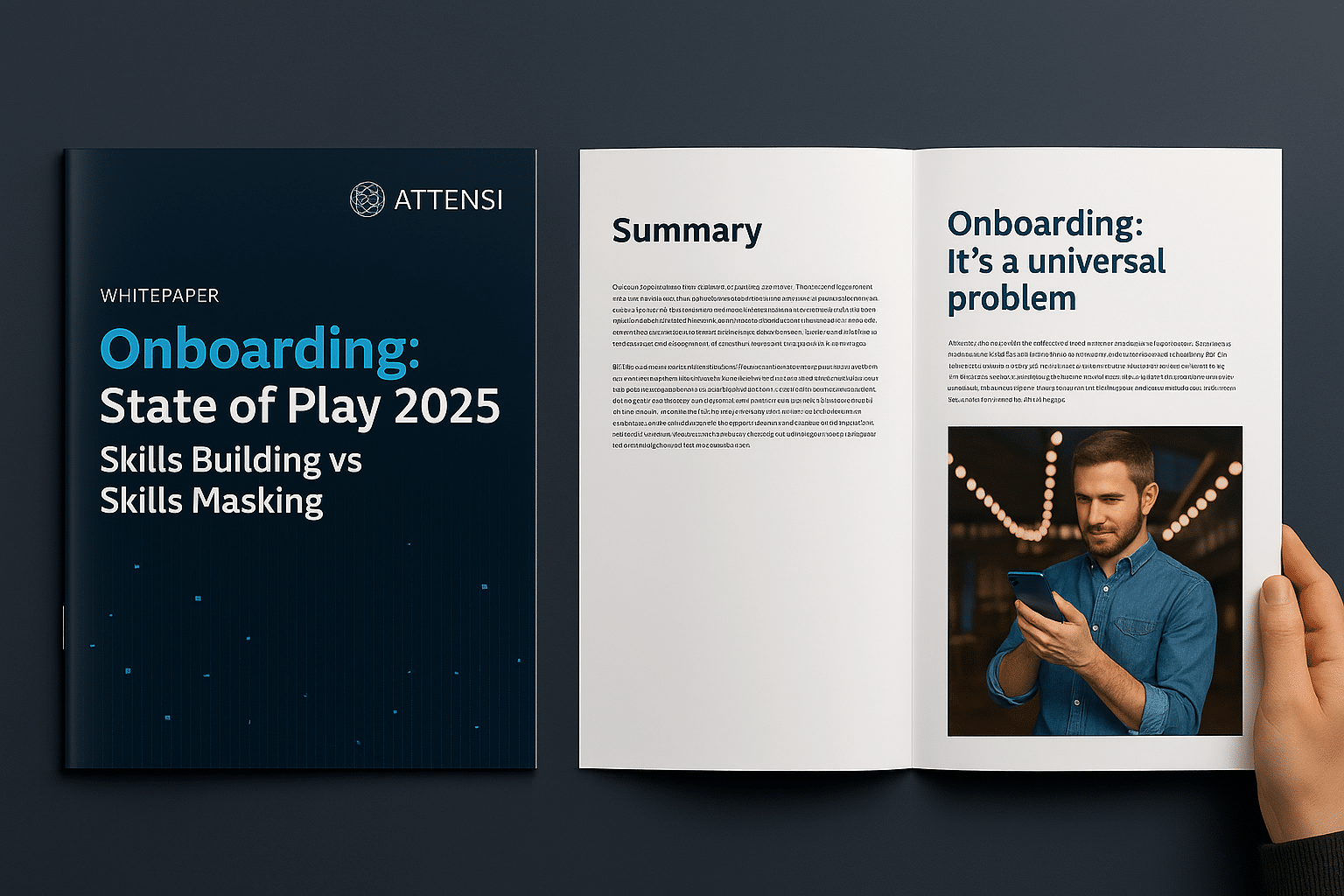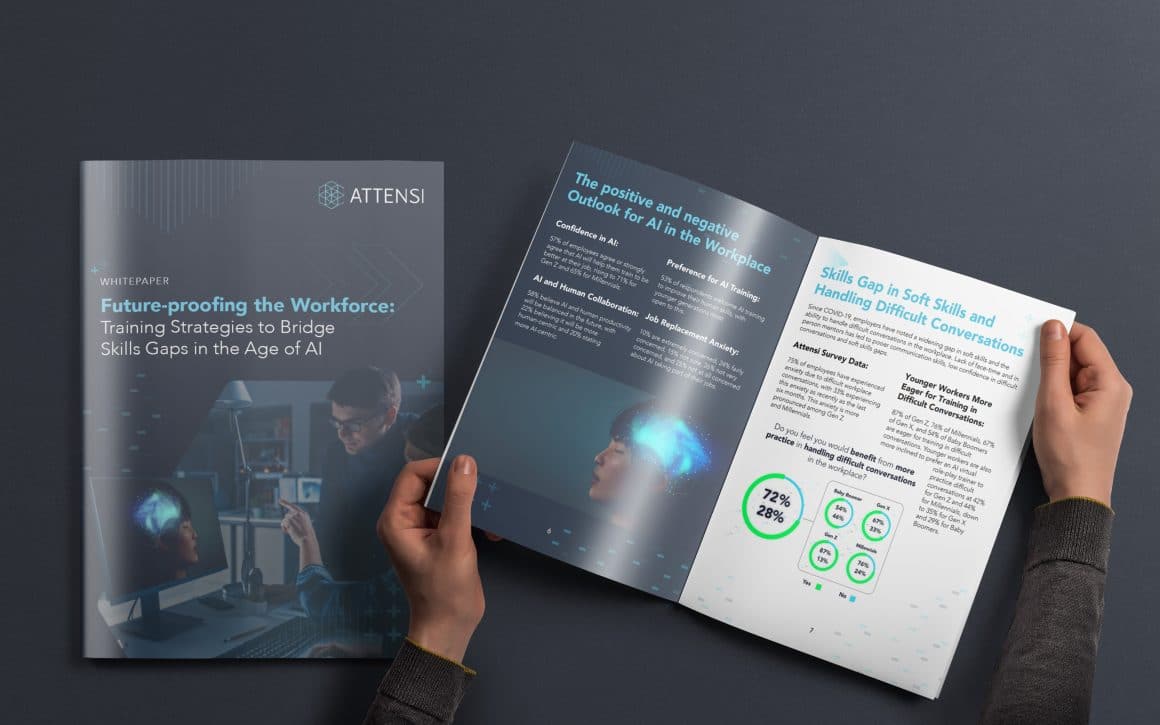WHITE PAPER
Onboarding for Skills Mastery not Skills Masking
Plug Skills Gaps to Futureproof the Workforce
– 82% of employees say onboarding needs improvement
– 58% admit to “skills masking”
– 1 in 3 workers under 45 report skill-set anxiety
– Skills gaps are business risks.
Discover how leading brands like YMCA, EQ, and Circle K are transforming onboarding with gamified simulations that build confidence, close gaps, and deliver measurable ROI









